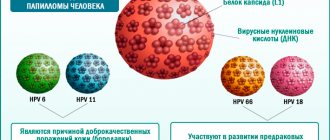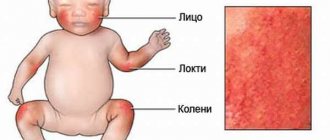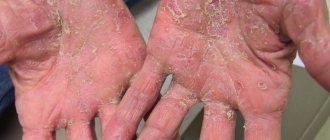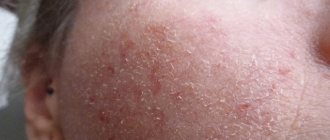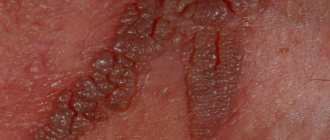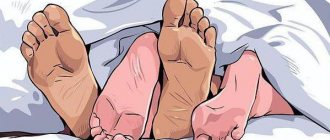Every day we have to deal with a huge number of viruses. One of the most dangerous to human health is the high-risk papillomavirus. This infection has more than a hundred different types. The danger lies in the fact that people can live normal lives and not even suspect that they are sick. Although both sexes can be infected with the human papillomavirus, women are more likely to be affected by the infection. HPV type 51 in women: what it is and how to deal with the problem.
The papilloma virus may not show symptoms for years
general information
According to medical research, the human papillomavirus is present in the body of seven out of ten people examined. The infection is insidious in that it may not manifest itself for a long time until the functioning of the immune system decreases or the person experiences severe stress. Depending on how the virus manifests itself, doctors distinguish two main groups of infection - skin and anogenital types. The second group includes human papillomavirus type 51, which manifests itself in the form of formations on the genitals.
It is important to understand that HPV 51 requires treatment. Harmless condylomas and papillomas can pose a serious danger to the health of the fair sex. This virus can provoke the development of various pathologies, which cause the development of cervical cancer and dysplasia, and rectal cancer. Other strains of infection are no less dangerous: HPV types 31, 39, 52 and 56 in women.
Are papillomas cancer?
Most likely no. All types of HPV are usually divided into three groups depending on oncogenicity (the likelihood of developing cancer):
- The first non-oncogenic group. Papillomavirus types 1,2,3,4,5 never cause cancer.
- The second group is low oncogenicity. These are viruses of types 6,11,42, 43,44. These strains of HPV rarely cause cancer. In rare cases, they lead to cell mutation, but the likelihood of this is low.
- The third group is high-risk HPV. Viruses types 16 and 18 have high oncogenic activity. Papillomavirus 51 belongs to the same group.
The latter group of HPVs is a common cause of cervical cancer. For men, HPV is less dangerous, although there are cases of bladder cancer caused by papillomavirus.
Causes of the disease
Today, scientists are conducting all kinds of research to understand how to stop the spread of this infection. It has been established that human papillomavirus type 51 can infect the body literally in a matter of hours. The minimum time during which the infection not only affects the reproductive system, but can also manifest itself in the form of a formed growth is six hours. The main route of infection is sexual. However, even protected sexual contact does not provide one hundred percent protection against these infections; the virus particles are so microscopic that they can easily penetrate even through a condom. Depending on the threat this infection poses to the human body, papillomavirus has varying degrees of danger. Since the human papillomavirus in women affects the mucous membrane of the genital organs, it belongs to HPV of high carcinogenic risk (HPV-HCR). The disease manifests itself on the upper layer of the epidermis in the form of pathological growths. HPV type 51 affects men and women without any noticeable or unpleasant symptoms for the patient.
What factors influence the fact that the virus enters the human body and begins to actively develop there? In addition to the well-known fact that the type 51 virus is transmitted through sexual contact, there are other ways of spreading this disease.
You can easily become infected by using the personal belongings of a person already infected with this infection.
The virus is transmitted through blood, as well as from mother to child during pregnancy. This infection is extremely dangerous for pregnant women, since at this time, due to hormonal imbalance, it becomes more active, which can lead to spontaneous abortion. Therefore, women who want to become mothers are prescribed various tests, including for the presence of papillomavirus.
After entering the body, papillomavirus type 51 is not immediately activated. A person can live his entire life without the virus affecting his health in any way. If he has good immunity, the spread of infection will be contained, so it is very important to monitor your health and lead an active lifestyle. HPV type 51 can be triggered by the following factors:
- metabolic disease,
- poor nutrition,
- lack of vitamins and beneficial microelements,
- stress and depression,
- hypothermia of the body,
- frequent colds and infectious diseases,
- long-term medication use,
- diseases of the endocrine and genitourinary systems,
- diabetes mellitus and hormonal disorders,
- sexually transmitted diseases,
- bad habits.
HPV 51 and 56 can also develop as a result of an unsuccessful abortion: during the operation, the cervix is exposed, on which a scar remains - an ideal place for the virus to multiply.
Poor diet can activate the virus
Features of human papillomavirus infection
HPV types 51 and 56 develop depending on the individual characteristics of the body. The infection can manifest itself on the human body in the form of various formations and growths. These could be viral papillomas. They have several varieties and are dangerous because they are difficult to detect, since in their color such papillomas are identical to ordinary skin. Symptoms of the disease may appear during a period of weakened immunity. After a person improves his health, the body suppresses the virus. However, without appropriate treatment, after some time the infection will reappear. Viral papillomas appear under the breasts, muscle cavities, in the groin and on the neck.
Genital warts - such formations can affect several organs at the same time. On the human body they appear in the form of single condylomas or in the form of numerous groups. The organs of the reproductive system are affected. There are both very small, barely noticeable growths and large formations up to 1 cm in size. It is not difficult to diagnose them. Externally, genital warts look like broccoli inflorescences, which are attached to the human body with the help of a small stalk. HPV type 52 in women can cause abundant appearance of such growths. Condylomas are usually located at the entrance to the anus, outside the genital organs.
But flat condylomas affect the internal reproductive organs, the cervix. If this disease is not treated in time, the virus can cause the development of cancer pathologies and also lead to complete infertility. Doctors identify four main stages in the development of this infection in the human body.
- The first is the invisible, that is, latent course of the disease. The virus can only be detected by passing a special blood test.
- At the second stage, HPV 51 gradually begins to affect the cells of the epidermis, causing the appearance of various growths and formations on the skin.
- The third stage is called koilocytosis - the virus begins to affect the body at the genetic level.
- The fourth is characterized by a change in the structure of the cell, oncological pathologies develop, and malignant neoplasms arise.
What to do if you suddenly notice suspicious symptoms and think that you have papilloma virus 51? Seek medical advice immediately!
General principles of treatment of papillomavirus type 51
Therapy is carried out in two directions:
- Taking medications to help stop the development of infection. They cannot destroy harmful particles, but almost immediately after the start of therapy they stop the activity of HPV. Antiviral drugs are presented in two groups: local (used externally) and general (for oral administration).
- Immunostimulants, immunomodulators. They are aimed at increasing the defenses of the human body. The attending physician prescribes immunomodulators with caution, because improper use sometimes leads to the development of autoimmune diseases.
Additionally, the outer coverings should be cleaned of growths caused by the papilloma virus 51. Removal methods:
- cryodestruction;
- radio wave method;
- electrocoagulation;
- laser removal of papillomas;
- excision with a scalpel.
The last option is less preferable, because accompanied by pain, the wound takes a long time to heal. The remaining methods are equally effective.
Diagnosis of HPV
To correctly diagnose human papillomavirus, you will need to consult your doctor. The diagnosis can be made using several methods.
- Carrying out colposcopy. During this procedure, the doctor examines the woman's vagina and cervix using a colcoscope, which, similar to a microscope, helps to examine the mucous membrane in detail.
- Cytological examination. For analysis, a sample of epithelium is taken from an organ affected by the virus (uterus, cervical canal). The scraping allows you to determine the level of damage, including determining whether a woman is at risk of developing cancer.
- Histological examination. Helps determine what type of papillomavirus a person has. During this examination, a small piece of the affected tissue is pinched off. The material is carefully studied to determine whether damage to the cells of the diseased organ has occurred.
- Blood analysis. The PCR method helps to detect human papillomavirus in the blood. In addition, it can be used to determine the DNA of HPV type 51, which is very important for further treatment of the patient.
- HPV genotyping will help predict how the disease will develop. This method diagnoses the genotype of the virus, that is, it determines which of the naturally occurring strains a person is infected with.
- Quantitative test. It can be used to determine the risk of developing cancer.
- If the virus causes extensive growths or cervical dysplasia, the doctor may prescribe an additional examination of the patient. These diagnostic methods will help determine whether organ damage is benign or malignant.
In addition, a visual examination of the patient can also confirm or refute the suspected HPV diagnosis.
Treatment of papillomas virus
It is important to know how to treat human papillomavirus in women. Despite the fact that the medical industry is constantly researching in this direction, it is currently impossible to cure this disease. Treatment of HPV type 51 consists of measures aimed at eliminating the symptoms of the disease.
- When making a prescription, the doctor must take into account the possibility of relapse: the virus can reappear in the human body after a certain time. Local treatment is selected aimed at removing condylomas and papillomas. This can be done by using physical methods of influencing the papilloma: laser therapy, cryodestruction or cauterization with liquid nitrogen.
- The chemical treatment method is based on the use of various drugs that can help if the papillomas have not seriously affected the body. The following medications are used for this: Solcoderm, Cantharidin, salicylic and trichloroacetic acids. All of them have a cauterizing effect, so they must be used with extreme caution. These medications must be applied strictly to damaged areas of the skin. If the condyloma has dried and changed color, the necessary therapeutic effect has been achieved.
- Doctors pay close attention to raising and strengthening the immune system. Therefore, another group of drugs that are prescribed for HPV are antiviral and antifungal drugs (Podophyllin, Groprinosin, Novirin, Bleomycin). These medications have a beneficial effect on the human immune system and prevent the virus from progressing.
- If condylomas begin to multiply sharply and increase in size, or the growths are injured, bleeding occurs, or a malignant formation is detected, then surgical treatment methods are used. You may also need to consult an oncologist and a dermatologist.
"Groprinosin" is used to improve immunity
Conservative treatment of papilloma virus
If oncogenic strains of the virus are present in the body, in addition to non-invasive methods, conservative treatment is prescribed, aimed at strengthening the body and suppressing the activity of the infection. Therapy is carried out using.
- Interferon-based immunomodulators that help strengthen and restore immunity.
- Antiviral agents.
- Vitamins.
- Proper nutrition.
- General strengthening procedures.
Additionally, medications are prescribed to treat unpleasant symptoms and concomitant diseases. These can be antibiotics, hormonal drugs, cytostatics, etc. Vaccination is used extremely rarely, since this method has not yet been studied well in practice.
The key to future health in the presence of dangerous strains of HPV is maintaining a healthy lifestyle, adhering to hygiene rules, and having one sexual partner. For the body to function well, it is important to eat well, rest, and avoid stress. Several times a year, tests and preventive examinations by a gynecologist are indicated.
Human papillomavirus type 35 in women: how to recognize, treatment methods
Previous post
Toxifort remedy for papillomas and warts: will get rid of growths quickly and without pain!
Next entry
Discussion: there is 1 comment
- Galina:
04/17/2018 at 17:15The article says correctly: you need to get treatment and everything will be fine. HPV is not a death sentence. I don’t rely on folk remedies—too seriously. I am diagnosed with type 16. Now I am being treated with subcutaneous injections and tablets. The injections are slightly sensitive, but can be tolerated. I can tolerate pills worse ((Well, nothing, the main thing is confidence and a positive attitude!
Answer
- Olga:
05/27/2019 at 17:04
I bought this product, it works quite well in principle, but the main thing is that it is effective, there are no side effects after using it at all, and the cost is quite adequate!
Answer
- Irina:
05/27/2019 at 17:07
An effective remedy, I was convinced of this from my own experience. It is also important that it can be used as a prophylactic agent; if there is a suspicion, then of course it is better not to neglect it.
Answer
- Olga:
05/27/2019 at 18:11
I try to be attentive to my health, I have heard about the papilloma virus, but I examined the bodies and I don’t see any papillomas or other signs of this disease on myself. But now I am aware of the symptoms.
Answer
- Nastya:
05/27/2019 at 18:13
But in order to treat HPV, you need to be examined in time; most diseases can be successfully cured if they are detected in time. But usually people come to the hospital when it’s too late.
Answer
- Lina:
05/27/2019 at 19:16
At the first symptoms, it is necessary to start treatment, the main thing is not to hesitate, but there are remedies! You can be treated not only with chemicals; there are products based on natural ingredients that are no less effective.
Answer
Preventive actions
According to doctors, the risk of contracting HPV type 51 is reduced significantly if a woman adheres to the following tips:
- leads an orderly intimate life with one partner,
- sexual activity began after the age of 18, when the internal reproductive organs are fully formed and can withstand the effects of viruses,
- engages in protected sex,
- Periodically, together with your partner, you are checked for STDs,
- tries not to damage the genitals,
- adheres to a healthy lifestyle,
- eats right,
- does physical activity.
The rule is well known: it is easier to prevent a disease than to treat it.
Therefore, it is imperative that representatives of the fair sex undergo examination by a gynecologist every six months and do not forget to take various tests.
Sexual life with one partner, the best prevention of HPV
